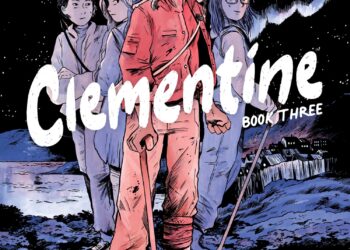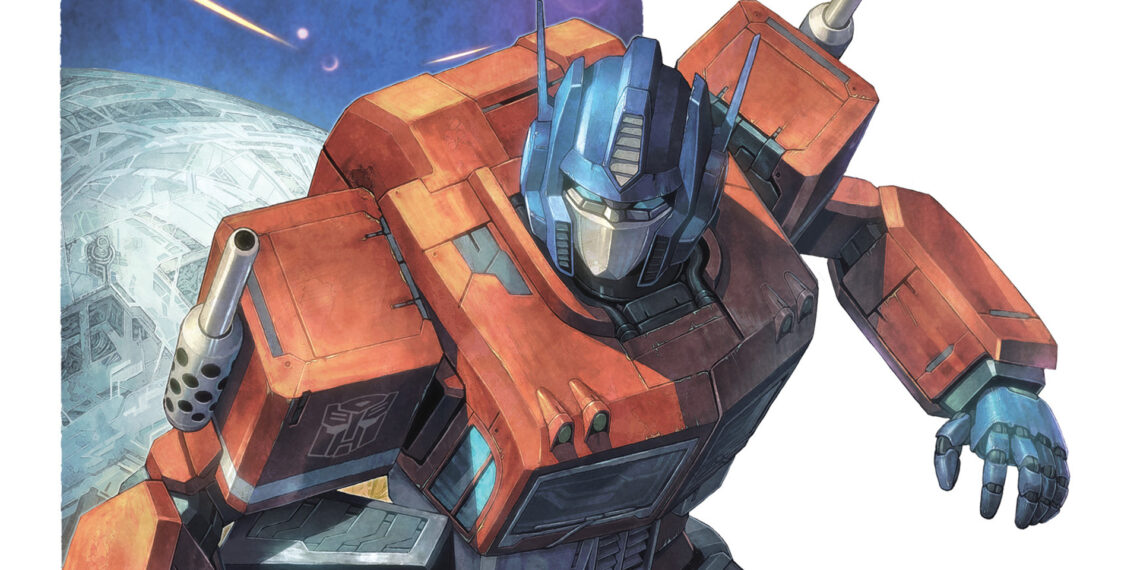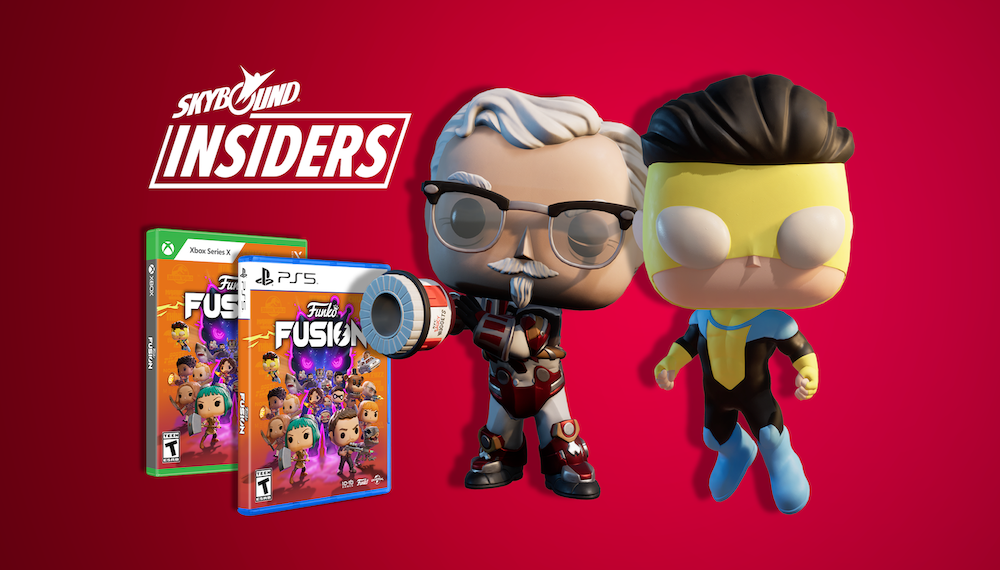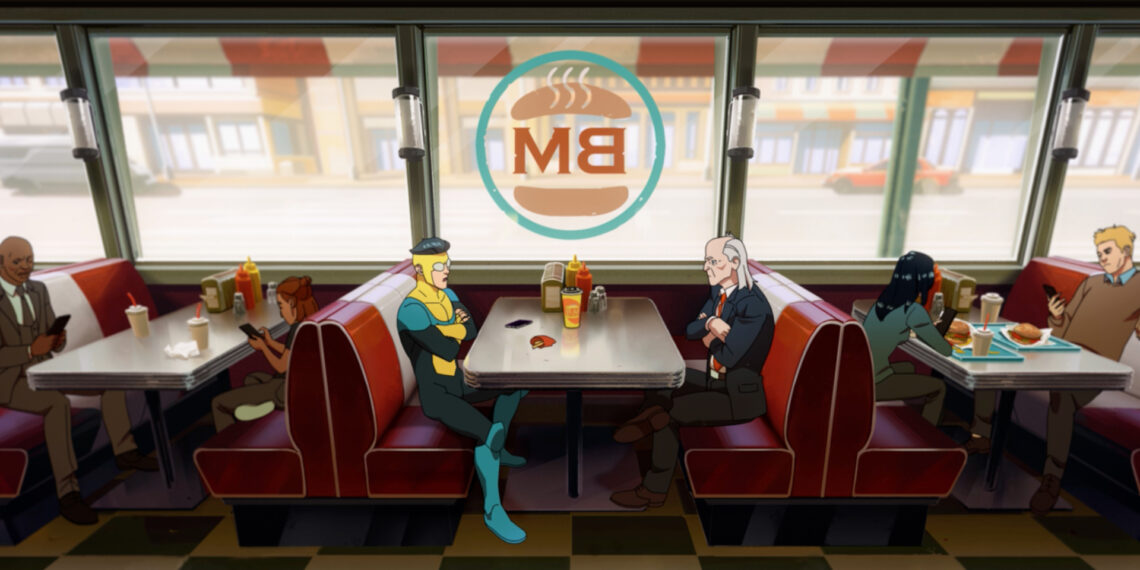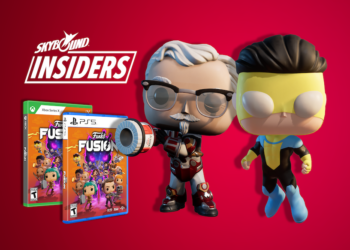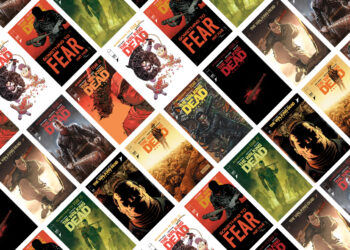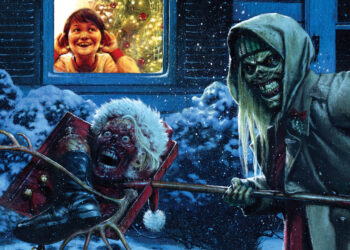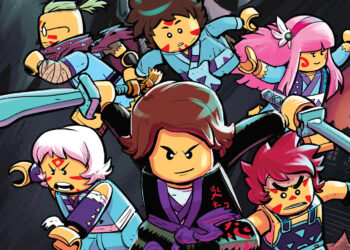When I was a kid, everything in superhero comics felt like the end of the world. Whether it was a massive fight, a character death or the Earth actually being destroyed, I’d finish a comic and be thrown completely for a loop. Staggered, stunned and shaken, I’d reassess everything I read just to make sure this apocalypse truly happened.
“That’s it,” I’d think to myself afterwards. “Nothing will ever be the same.”
That’s what great superhero comics were all about to me. But as you get older, it’s not quite the same. You might still enjoy superhero comics, but you start to recognize the tricks they play and the formulas they follow. There’s an appreciation there, but as you age, cynicism joins it, changing the way you engage with that type of comic even as you continue to read them.
Eventually you realize, in a weird way, you’re chasing the feeling you had when you were a kid. That feeling of everything being an event; of earth-shattering changes to the status quo; of knowing with every fiber in your body that nothing will ever be the same. It’s an eternal pursuit for comic fans, and one that can be hard to fulfill.
I found that feeling once again with Invincible #11.
Early on, co-creators Robert Kirkman and Cory Walker established the book as a good one, and it was something line artist Ryan Ottley (as well as colorist Cliff Rathburn and letterer Rus Wooton) helped build in those initial arcs as well. Invincible lived up quite well to the text it displayed above the title: “Girls, acne, homework, super-villains. When you’re a teenager, it helps to be INVINCIBLE.” It wasn’t just a cute thing the book did; it was a mission statement of sorts.
Invincible was a fun comic about a young man named Mark Grayson who had to balance his life as a high school senior with newfound superpowers. It helped a ton that his dad was, secretly, the world’s greatest superhero and that his mom was almost remarkably casual about what that kind of life entailed, but still, there were complications as there always were for heroes.
It was exactly what many comic fans have been conditioned to want out of our superhero comics. If it weren’t for the “i” on the corner of each cover, you might have guessed that Invincible was a Marvel comic even. Mark was every bit the Marvel Comics hero archetype. Sure, he had superpowers, but he also had relatable problems – a.k.a. the aforementioned girls, acne and homework. We didn’t see a god, we saw ourselves if our lives had turned out a little differently. It was a pitch perfect example of what made superheroes so special, and it established Grayson as a quintessential iteration of that character type.
And that was great. That’s a wonderful thing to be as a comic. Initially, I enjoyed Invincible for the comfortable experience it offered. It was something familiar that was done incredibly well by a creative team at the top of its game. If it was just that, I’d have been happy with the comic.
But then Invincible #11 came and ruined everything.

Here’s the Cliff’s Notes version of what happened. Up until that issue, we thought Mark’s dad Nolan – the aforementioned greatest superhero in the world, Omni-Man – was an alien from a benevolent, peaceful planet. Those origins were where both his powers and Mark’s came from. While we knew there was a darker side to Nolan, as he had brutally murdered the super team the Guardians of the Globe in issue #8, we didn’t know the reason for that. We just knew he did it. But in issue #11, we discover that his people weren’t peacekeepers; they were conquerors, and Nolan wanted Mark to join him in taking over the Earth. Join or die, his father effectively tells him.
Naturally as a hero, Mark goes with option C: stop his dad, change his mind and save the day. What transpires is an absolutely brutal beating – as potently depicted by Ottley and Crabtree in issue #12 – that ends with Omni-Man leaving the planet and his broken and bloodied son left cratered into the Earth. It was savage, shocking and ended with the status quo forever changed. In short, nothing would ever be the same.
My childhood fervor for superhero comics was reawakened right then and there.
That’s Invincible, though.
It’s a superhero comic created by people who clearly missed the emotions we had as kids about superhero comics as much I did, so they set out to make a comic built to bring those feelings back to us. But how did they accomplish that when so many before them struggled? I mean, superhero comics were still good elsewhere, but you appreciated them for their storytelling and craft, and not necessarily because of how they could reignite the feelings of our youth. How did Kirkman, Ottley and the rest manage to succeed not just with the Omni-Man fight, but Robot’s heel turn, the Conquest battle, The Viltrumite War, and so many other moments?
Part of it was how Invincible dispensed with an old Marvel staple that is one of the governing ideas behind most superhero storytelling. Stan Lee called it “the illusion of change,” or the idea that no matter what happens to our heroes and their world, everything would return to its status quo eventually. Superheroes are, after all, a place of comfort for us as readers, and this idea helped ensure we’d get back to where we all began eventually.
Unlike most superhero comics, though, Invincible was one filled with change. And the most impressive way this attribute manifests itself, though, isn’t in the shocking bits of destruction – of which there are many in Invincible, on a scale few comics can compare to – but in how this change is reflected in the interpersonal moments. Look at the titular hero for a perfect example. When we first meet Mark, he’s a high school senior who is single and working in a burger joint. By the final issue, he’s married, has children and is even the king of the alien race he barely knew anything about when we first met him. He actually grew with us, a true rarity in the genre.
It isn’t just the lead character who goes through that, though. Every character has an arc, from Mark’s parents Nolan and Debbie to supporting characters like Allen the Alien and The Mauler Twins. By allowing for not just change, but growth, we’re given a superhero comic that is capable of surprising us if only because we truly never know where it’s going to go.
Naturally, we have the stellar creative team to thank – or blame, depending on your perspective on some story beats – for all of this as well. Let’s start with the book’s constant. If I could come up with an analog for Robert Kirkman outside of comics, it’d probably be George R. R. Martin, if only because they’re both so adept at delivering story beats no one could see coming (the Omni-Man fight is Invincible’s answer to Ned Stark’s death, of course). But like Martin, Kirkman is also gifted at creating characters we love and want to follow to the bitter end, all while creating a fully realized world we love to visit. While The Walking Dead is obviously a giant accomplishment, for me, Invincible is Kirkman at his absolute finest, showcasing the wonder he can deliver that so few others can match.
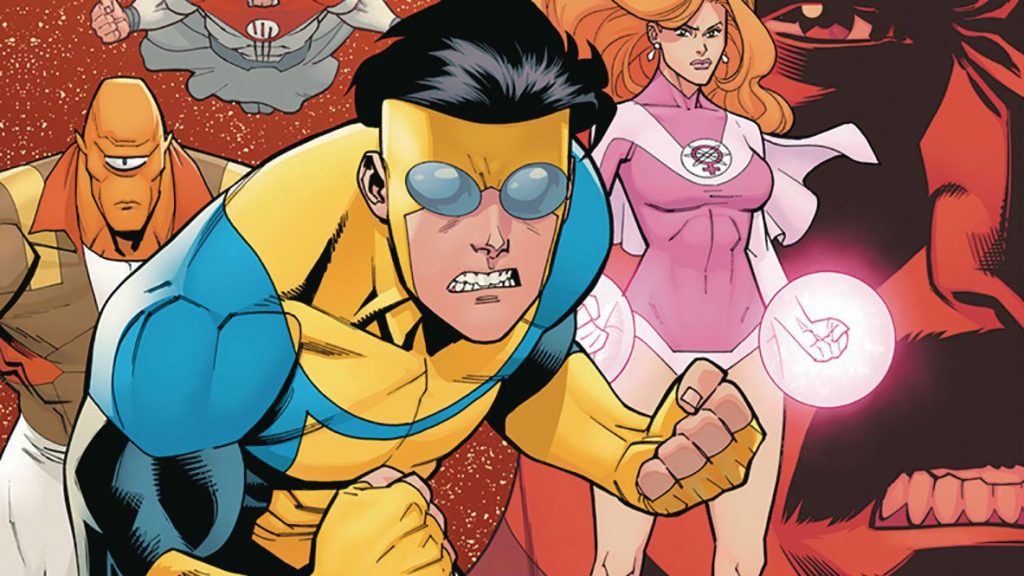
It helps that the book has had one of the most astonishingly gifted art teams we’ve seen this century on any superhero comic.
From Rus Wooton (and Kirkman himself!) on letters and Cliff Rathburn’s inks and greyscales to the coloring of Bill Crabtree, FCO Plasencia, John Rauch and Nathan Fairbairn, this is a book where every facet has been exceptional from day one. But I have to focus on line artists Cory Walker and Ryan Ottley in particular, if only because of what they represented.
From day one, Invincible looked the part as a superhero book we could and should love because of Walker’s ability as not just an artist, but as a designer. Walker and his costume design for characters like Invincible, Omni-Man, Atom Eve, Robot and beyond paid dividends long after he departed from the book. He defined the look of this book, and every time he returned to the title, he reminded us what we’d been missing since he’d left by perfectly depicting some of Invincible’s most memorable moments.
And if Walker defined the look of this book, then Ottley was the one who elevated it into the stratosphere – which is incredible given where he came from. When he joined the title, Ottley was a relative unknown. By the time the book came to its end, he was on the shortlist for the greatest superhero artists in comics today. The growth you can see in his work over the life of the book is staggering. And Ottley was almost as constant of a presence as Kirkman. Maybe the most underrated part about the series is that in an era defined by rotating art teams, Ottley was the artist on 127 of Invincible’s 144 issues.
And those 127 issues are filled with exceptional moments from Ottley throughout. I’m not just talking about the fights where it feels like you can feel the punches being exchanged between characters like Thragg and Battle Beast, either. Sure, Ottley can deliver beats like Mark literally punching through a planet better than just about anyone, but his abilities with character acting in quiet moments are underrated and essential to readers loving this book as much as we did. Without Ottley’s eye for detail and character work, the heart of the book – its atypical growth and penchant for change – might not have connected as much as it did.
One of my favorite random parts about Invincible as a series were those little bits of text above the title each issue I mentioned earlier. While it started with the “Girls, acne, etc.” line, the most regularly appearing line was some variation of this phrase declaring with tongue-in-cheek braggadocio that Invincible was, “The best superhero comic in the universe.”
Initially, I found it to be this little charming thing the book did. It both existed as a throwback to superhero comics of yesteryear, like Fantastic Four being declared “The World’s Greatest Comic Magazine!” on each cover, and as a bit of bravado from an upstart superhero comic that wasn’t from one of the two houses most known for them. I liked it. It was fun.
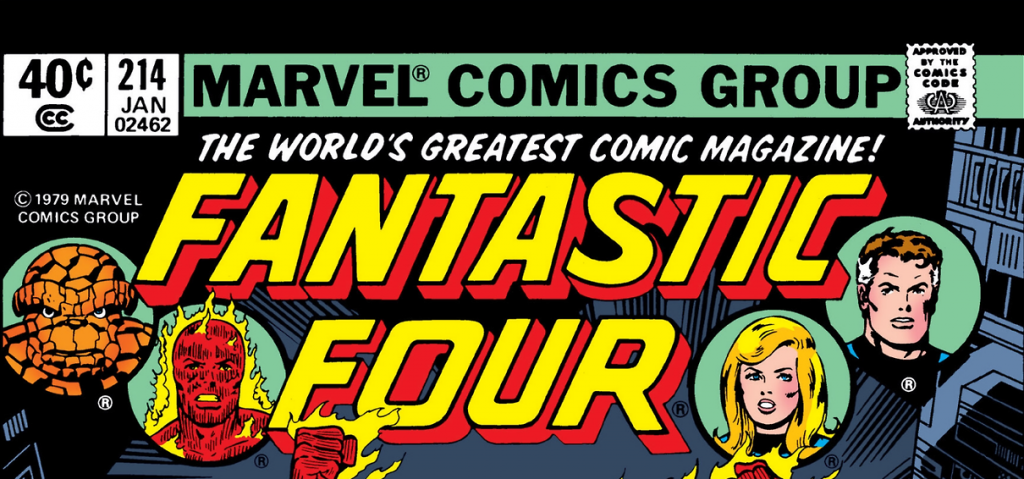
But the funny thing about it was, after a while, it stopped being bravado and just became the truth. While other titles over its run might have been better for a time, Invincible was the rare superhero comic in an era of reboots and rebirths that was a singular narrative, and one that was consistently great throughout.
Weirdly, they spent so long telling us what Invincible was that eventually it just became that:
the best superhero comic in the universe.
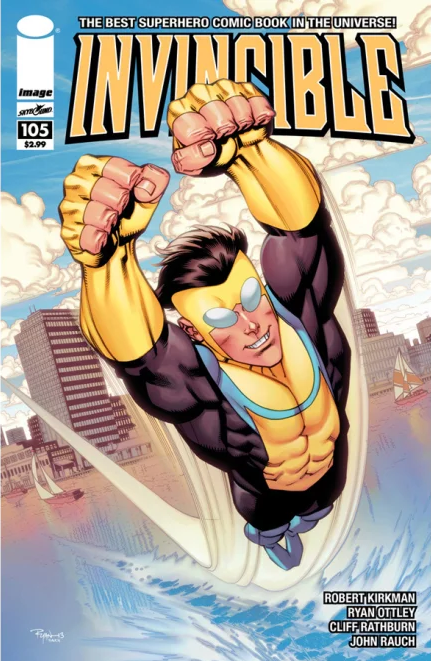
Ultimately, over the 15 years and 144 issues of its run, Invincible perfectly captured everything I loved about superhero comics to begin with. That’s a magical thing. And now it’s over. But that’s okay.
Sure, nothing will ever be the same.
But as Invincible reminded me, sometimes that can be a good thing.
– David Harper
For more on Invincible check out:
Exclusively for Insiders:
Phil Lamarr Fan Casts the Animated Invincible of his Dreams!





